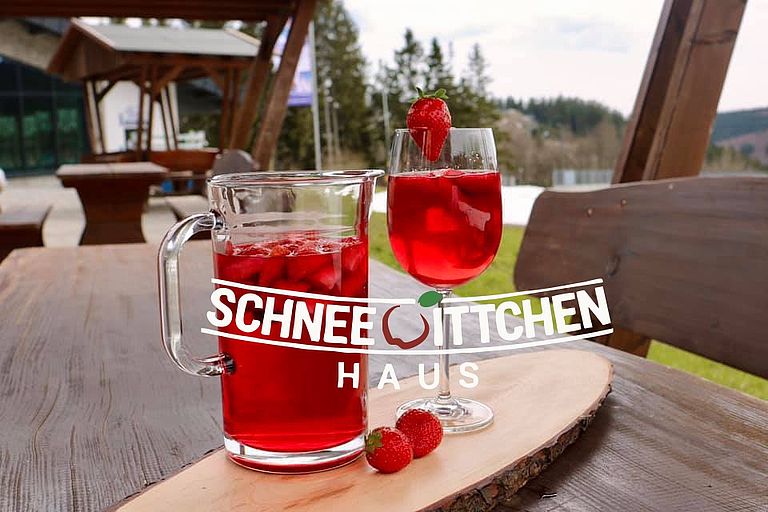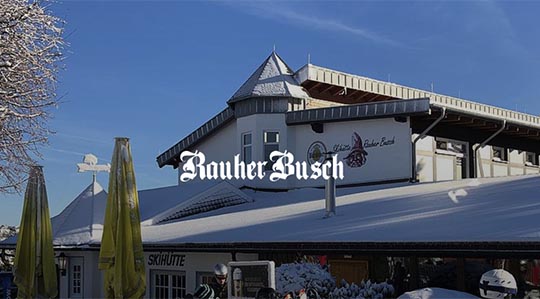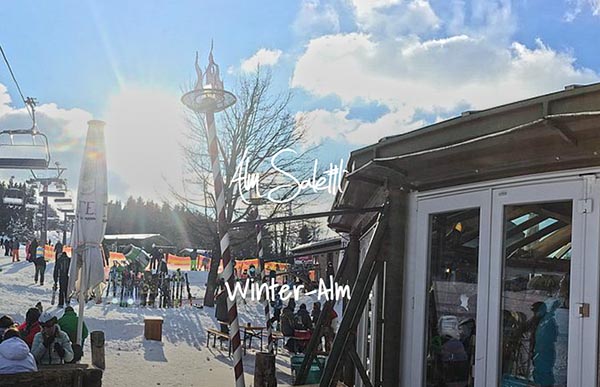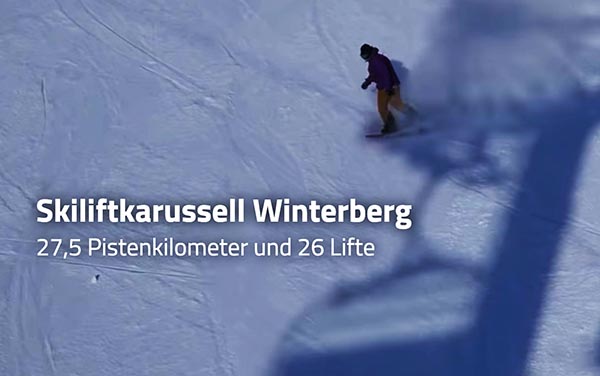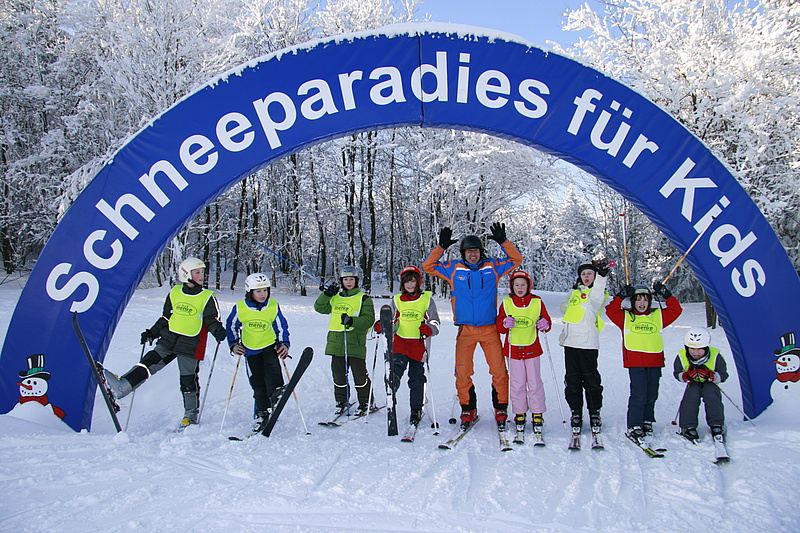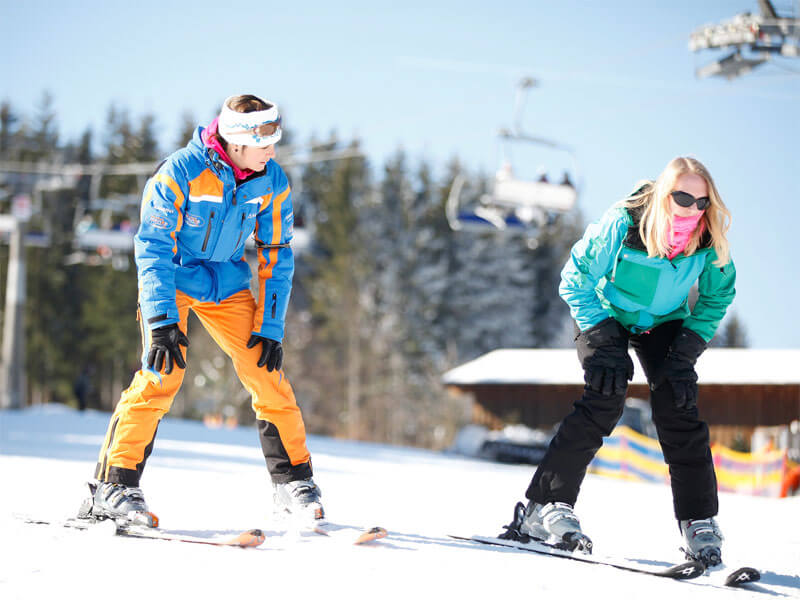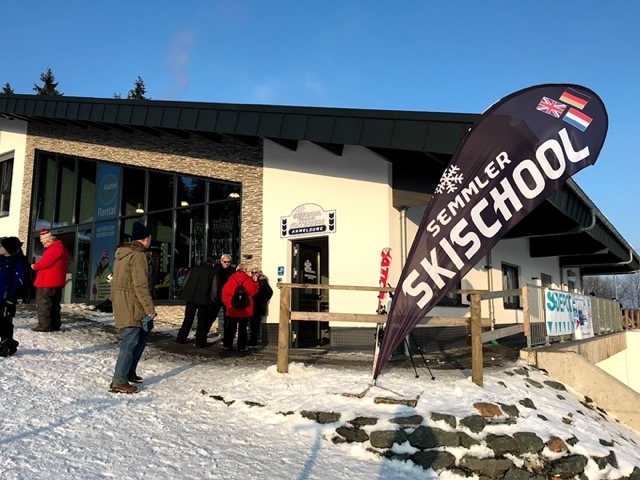Welcome to our blog post about the fascinating world of snow production in the Winterberg ski lift carousel!
Why is snow production important?
Snow production is an important aspect in ski resorts and has several main arguments that underline its importance:
-
- Ensuring snow reliability: Snow production enables ski areas to be independent of natural snowfall. This extends the season and guarantees snow for visitors.
- Economic importance: Snow production allows ski resorts to ensure their profitability because they are less dependent on unpredictable weather conditions. This contributes to the stability of the tourism industry and local economy.
- Improving slope quality: Artificially produced snow can improve the quality of slopes by providing a consistent snow cover, which ensures a better skiing experience and increases skier safety.
- Environmental protection and sustainability: Modern snow production technologies increasingly take aspects of environmental protection and sustainability into account. Efficient systems and the use of recyclable water help minimize the ecological footprint.
- Tourist attractiveness: Snow production enables ski resorts to increase their attractiveness to visitors as they can ensure a constant presence of snow. This contributes to customer loyalty and attracting new guests.
The technology behind snow production
1. How does a snow cannon work?
A snow gun essentially works like a large sprinkler system. It uses water and compressed air to create snow crystals and distribute them onto the slopes. The process takes place in several steps:
-
- Water supply: The snow cannon is connected to a water source, such as a lake or a water tank.
- Water conversion: The water is pumped through the snow cannon and enters a nozzle. There it is finely atomized.
- Air supply: At the same time, compressed air is fed into the snow cannon to support the snowmaking process. The compressed air is directed into the nozzle and mixed with the atomized water.
- Snow formation: The combination of atomized water and compressed air creates tiny ice crystals. Depending on the temperature and humidity, these crystals can have different shapes and sizes.
- Distribution on the slopes: The resulting snow crystals are sprayed onto the slopes by the snow cannon. There they collect and form a blanket of snow.
This process is repeated continuously to create an even snow cover on the slopes. Depending on the model and settings, the snow guns can produce different types of snow, such as powder snow or wet snow, to suit the slope conditions.
2. Safety in snow production
Safety during snow production is an important aspect that must be considered. Here are some safety points to consider when using snow guns:
-
- Site selection: The location of snow cannons should be carefully selected to ensure that they do not pose a danger to people or infrastructure. Good planning and securing of the area around the snow cannons is important.
- Proper setup: It is important that the snow cannons are properly set up and correctly adjusted. This includes the correct orientation of the nozzles to ensure optimal distribution of the snow.
- Monitoring weather conditions: Weather conditions play a crucial role in snow production. It is important that snow gun operators closely monitor current weather data to adjust production accordingly. Freezing moisture and strong winds can affect safety.
- Employee training: The personnel responsible for operating and monitoring the snow cannons should have the necessary knowledge and training. You should be aware of how the machines work and be able to identify potential risks and respond appropriately.
- Communication with skiers: It is important that skiers are informed about the use of snow cannons and the associated safety measures. Signs and notices can help ensure skiers are aware that snow cannons are in operation and that they behave accordingly.
By following these safety measures, snow production can be carried out safely and effectively to ensure optimal conditions for skiers.
The collaboration of technology and nature
1. Sustainability and environmental protection
Artificial snow production is an issue that should also be considered with regard to sustainability and environmental protection. Here are some aspects to consider:
-
- Water consumption: Snow production requires a considerable amount of water. It is important that water use is optimized and efficient irrigation systems are used to minimize water use.
- Energy consumption: The snow cannons require energy to function. It is advisable to use energy efficient models and keep energy consumption as low as possible. Using renewable energy, such as solar energy, can also help reduce your carbon footprint.
- Environmental impacts: Snow cannons and artificial snowmaking can have an impact on the surrounding flora and fauna. It is important that these impacts are minimized and measures are taken to protect the natural environment. These include, for example, selecting locations with minimal impact on sensitive ecosystems and adhering to guidelines to protect nature.
- Snow management: Efficient planning and good snow management are important to minimize resource consumption. Through a precise analysis of snow conditions, snow production can be more targeted and efficient.
- Awareness and education: It is important to raise awareness among skiers and other slope users about the environmental impacts of artificial snow production. Through information and educational measures, awareness of environmental aspects can be created and environmentally friendly behavior can be promoted.
Through a holistic view and implementation of sustainability measures, artificial snow production can be improved with regard to environmental protection and sustainability.
2. Natural snow vs. machine snow
Natural snow and machine-made snow have some differences. Here is a comparison:
Natural snow:
-
- Caused by natural weather conditions such as cold and precipitation.
-
- Has a unique crystal structure and can be of different shapes and sizes.
-
- Often feels softer and fluffier.
-
- Can provide higher snow quality and better gliding properties.
-
- Can provide better snow conditions for off-piste activities such as freeriding.
- Depending on local weather conditions, the availability and consistency of natural snow may vary.
Machine snow:
-
- Is artificially created by snow cannons.
-
- Often has a more compact and dense structure than natural snow.
-
- May have different quality and consistency depending on temperature and humidity level.
-
- Can allow for a longer season as it can be produced on demand regardless of natural snow conditions.
-
- Can ensure improved slope conditions and a more even snow cover.
- Can be used in ski resorts to ensure snow security and support winter tourism.
It is important to note that both natural snow and machine-made snow have their advantages and disadvantages. The preference often depends on individual preferences, prevailing weather conditions and local options. Sometimes a combination of natural snow and machine-made snow can result in optimal skiing conditions.
3. Impact on ski tourism
Artificial snowmaking in the Winterberg ski lift carousel has various effects on ski tourism. Here are some of them:
-
- Snow reliability: Artificial snowmaking makes it possible to produce snow and extend the ski season. This increases snow reliability and skiers can ski on well-prepared slopes for a longer period of time.
- Attractiveness for skiers: The possibility of skiing even in less favourable natural snow conditions makes the ski area more attractive for skiers. This can help boost tourism and attract more visitors.
- Economic benefits: Artificial snowmaking can have significant economic benefits for the ski area. A longer ski season and increased number of skiers can increase revenue from lift tickets, equipment rentals, dining and accommodations.
- Competitiveness: Ski resorts with good artificial snowmaking systems can differentiate themselves in a highly competitive market. They can provide skiers with snow conditions that may not be available in other areas, increasing their competitiveness.
- Environmental impact: It is important to note that artificial snowmaking can also have an impact on the environment. The water use and energy required to produce machine-made snow can have an environmental impact. Therefore, it is important to implement sustainable practices regarding artificial snowmaking to minimize the impact on the environment.
Artificial snowmaking in the Winterberg ski lift carousel therefore has both positive and potentially negative effects on ski tourism. It is important to take a balanced approach that both takes into account the needs of skiers and minimizes the environmental impact.
The Winterberg ski lift carousel
Skiing in Winterberg
Skiing in Winterberg offers a variety of opportunities and attractions for skiers. Here are some aspects of skiing in Winterberg:
-
- Slopes: Winterberg has a variety of slopes for skiers of all skill levels, from beginners to experienced professionals. There are wide and gentle slopes for beginners as well as challenging runs for advanced skiers.
-
- Lifts: Winterberg has modern lifts that provide convenient and quick access to the slopes. This includes chairlifts, drag lifts and conveyor belts.
-
- Snow reliability: Thanks to a well-developed artificial snowmaking system, snow reliability is guaranteed in Winterberg. This means skiers can enjoy the slopes even when natural snow conditions are less favorable.
-
- Ski schools: There are ski schools in Winterberg that offer ski courses for beginners. These courses are ideal for learning the basics of skiing or improving your skills.
-
- Snowpark: For freestyle enthusiasts, Winterberg also has a snowpark at the Postwiese in Neuastenberg with various features such as kickers, rails and boxes. Here skiers can try out their tricks and jumps.
- Après-ski: After a day on the slopes, Winterberg also offers various après-ski options. There are cozy cabins, bars and restaurants where skiers can relax and enjoy the experience with friends and family.
Skiing in Winterberg offers a varied and exciting experience for skiers of all ages and abilities.
Tips for a safe skiing experience
1. Safety precautions at the ski lift carousel
The safety precautions at the ski lift carousel are of great importance to ensure the safety of skiers and other visitors. Here is some information about the safety precautions at the ski lift carousel:
Modern closing bars: The current safety precautions with modern closing bars do not allow disabled people to ski on the ski lift carousel.
FIS rules of conduct: In the Winterberg ski lift carousel, the FIS rules of conduct apply for safe skiing on the ski slopes. These rules were developed to regulate the behavior of skiers and avoid collisions. It is important that all skiers follow these rules to ensure everyone’s safety.
Guaranteed snow: The Winterberg ski lift carousel is the largest ski area in the Sauerland and has modern snow production. This ensures good snow security, which also contributes to the safety of skiers.
It is important that skiers follow safety precautions and ride responsibly to avoid accidents.
2. Recommended Equipment
Here are some recommended pieces of equipment for skiing and snowboarding in the Skiliftkarussell Winterberg:
-
- Skis or snowboard: Choose skis or a snowboard according to your preference and ability. Make sure they suit your needs and the terrain in Winterberg.
- Ski boots or snowboard boots: Make sure your boots fit well and are comfortable. A correct fit is important for control and comfort while riding.
- Ski helmet: A ski helmet is an essential piece of safety equipment when skiing or snowboarding. It protects your head from possible injuries.
- Ski goggles or sunglasses: Ski goggles or sunglasses with UV protection are important to protect your eyes from sunlight, snow and wind. Choose glasses with good visibility and an appropriate size for your face shape.
- Ski gloves or snowboard gloves: Gloves keep your hands warm and protect them from cold and moisture. Choose gloves that are water-repellent and well insulated.
- Ski jacket and ski pants or snowboard jacket and snowboard pants: Choose clothing that is waterproof, breathable and warm. Layer your clothing to adapt to different temperatures.
- Thermal underwear: Wear thermal underwear to keep your body warm and keep moisture away from your skin.
- Ski socks: Choose special ski socks that wick away moisture and provide cushioning for comfort.
- Protectors (optional): If necessary, you can also wear knee, elbow or back protectors for additional protection.
Remember to check your equipment regularly and ensure it is in good condition to ensure your safety and riding experience.
3. Tips for behavior on the slopes
Here are some tips on how to behave on the slopes in the Winterberg ski lift carousel:
-
- Consideration: Be considerate of other skiers and snowboarders. Keep enough distance and drive in a controlled manner to avoid collisions.
- Priority rules: Observe the priority rules on the runway. As a rule, slower skiers or skiers ahead have priority. Be alert and adjust your driving speed to drive safely.
- Visibility: Make sure you are clearly visible. Wear bright or eye-catching clothing to be easily recognized by other skiers.
- Correct lane: Drive on the correct side of the track and stay in the lane. Stick to the markings and pay attention to the information signs.
- Communication: Communicate clearly and in a timely manner with other skiers to announce your intentions. Use hand signals or shout to announce your changes of direction or overtaking maneuvers.
- Willingness to help: Help other skiers if they need help or have fallen. Report accidents or dangerous situations to the slope staff.
- Respect nature: Respect nature and do not throw rubbish on the slopes. Use waste containers provided for this purpose.
- Control your speed: Always drive at a speed that you can safely control. Adjust your speed to the slope conditions, visibility and traffic volume.
- Alcohol and drug consumption: Avoid consuming alcohol or drugs before or while skiing. These can affect your ability to react and judge.
- Emergency equipment: Carry emergency equipment with you, such as a cell phone and a piste map. Find out about the locations of rescue points on the slopes.
By following these behavioral tips, you will help ensure a safe and enjoyable skiing experience for everyone on the slopes.
Conclusion
Snow production in the Winterberg ski lift carousel is a fascinating example of how technology and nature can work in harmony. Thanks to modern snow production techniques, the ski area no longer relies solely on natural snowfall. This not only extends the season, but also guarantees snow for visitors. This means skiers and snowboarders can fully live out their passion for winter sports while protecting the environment. The magic of snow production allows technology and nature to go hand in hand and the pleasure of skiing is independent of the whims of the weather. A true win-win situation for all sports fans and environmentalists alike. So grab your skis or snowboard and immerse yourself in the wonderful world of the Winterberg ski lift carousel!


